Want to know about the natural wonders that Iceland has to offer? Find out about the incredible nature there is to see in Iceland in our latest blog.
Whether stretching towards the sky or bubbling beneath the surface, Iceland is packed full of unbelievable natural wonders. Adventure is waiting to be found in a wide variety of different forms, each unique and amazing to see. The volcanic activity in the area mixes with glaciers to form unusual and surprising landscapes and formations. It’s rare to see all of what Iceland has to offer in one place so make sure to plan an itinerary so that you can make the absolute most of your visit.
The scenery of Iceland is truly unique, famous for the natural phenomenon littering the landscapes. But what exactly can you find on an Icelandic road trip? In our complete guide to Iceland’s natural wonders, you’ll find everything that this fascinating nation has to offer, and even where to find it! Let’s take a look at the most beautiful places to visit to enjoy Iceland’s scenery.
Best Natural Wonders Iceland
Iceland’s nature is one of the best qualities this country possesses, with countless unmissable locations wherever you are in the country. If you are looking for some of the best natural wonders to visit on your trip to Iceland, we have put together a list of some of the things you really should see when visiting the country. We have listed out some of the best natural wonders in Iceland, with more detail on each included in our guide below;
-
Waterfalls
-
Hot Springs
-
Geysirs
-
Glaciers
-
Ice Caves
-
Black Sand Beaches
-
Volcanoes
-
Lava Fields
-
Northern Lights
- Midnight Sun
- Basalt Columns
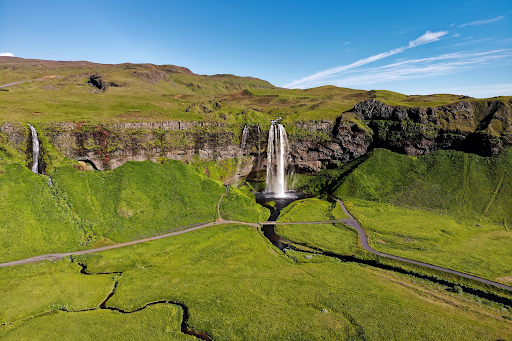
1. Iceland’s Waterfalls
While it may sound simple, there’s nothing quite like witnessing the sheer force of Iceland’s nature. Waterfalls are some of the most powerful and popular natural wonders of Iceland. The melting ice and glaciers across Iceland, coupled with amazing landscapes, create some of the world’s most incredible waterfalls. In some cases, you can even find your way on top of and behind some of the most powerful waterfalls in the country. Some of the most popular natural waterfalls in Iceland are:
- Gullfoss, in Iceland’s Golden Circle
- Seljalandsfoss, where you can infamously walk behind the sheet of falling glacier water
- Dettifoss, the most powerful waterfall in Iceland and the 2nd most powerful in Europe
- Skogafoss, a powerful waterfall with a lot of spray said to hide ancient treasure from Icelandic settlers
- Hraunfossar, a long, stunning waterfall in west Iceland where water seeps from lava rock
- Hjalparfoss, a double waterfall near the Golden Circle
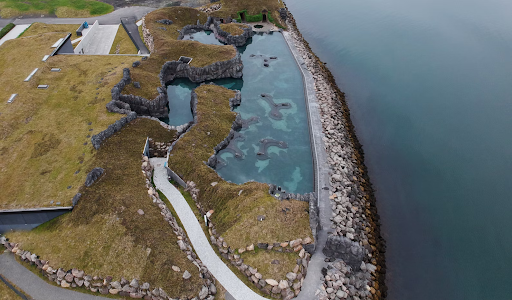
2. Iceland Natural Hot Springs
While waterfalls can be found around the world, unique conditions are required to form natural hot springs. A direct product of the underground volcanic activity, hot springs can be found all over Iceland.
Magma beneath the earth's crust heats water on the earth’s surface, creating idyllic pockets of warm, paradisiacal pools, excellent for relaxing after a day of hiking or exploring Iceland. Most hot springs are at least 38 ℃ but can become much hotter if volcanic activity increases. This occurs in Iceland due to its location on top of a rift between two tectonic plates.
Water in hot springs is full of vitamins and minerals, with Iceland’s water being known worldwide for its quality - you can drink it right from rivers, it’s that tasty! As a result, many hot springs are now relaxing spas, perfect for a soak after exploring the other natural wonders in Iceland. Some of the most famous hot springs in Iceland are:
- Blue Lagoon, a great stop on Iceland’s Golden Circle
- Sky Lagoon, a newer spa located outside of Reykjavik with an infinity pool overlooking the ocean
- Lake Mývatn Nature Bath, found in northern Iceland
- Hot Spring at Landmannalaugar, a little more difficult to reach in Iceland’s southern Highlands
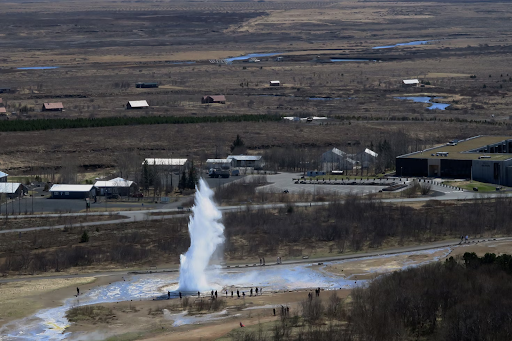
3. Geysers
Geysers are another unmissable natural wonder, a result of volcanic activity in Iceland. It’s incredibly rare to find active geysers, as it takes a complex mixture of conditions for one to form. Magma needs to be close enough to the earth’s surface to boil a body of water, which needs to be flowing constantly underground. Geysers also require a natural network of tunnels, coated with silica, that allows water to erupt from the earth’s surface into the air, often drenching anyone standing nearby!
Some unmissable geysers to be found in Iceland are:
- Strokkur, visited by most Iceland tourists and part of the Golden Triangle
- The Great Geysir, the first geyser ever discovered in Europe, though now dormant
- Gamla Laugin, a smaller but more frequently erupting geyser near the Great Geysir
- Litli Geysir, a smaller geyser always bubbling away beside Strokkur
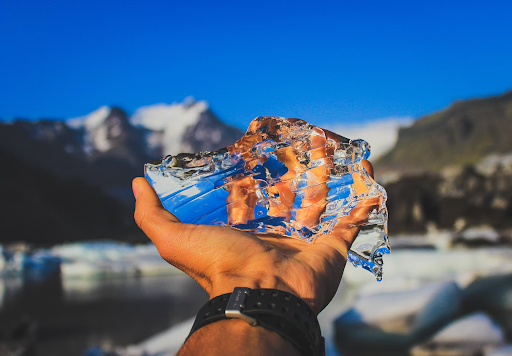
4. Glaciers
One of the natural wonders in Iceland that have a huge part to play in other, smaller phenomenon across the island. These massive blocks of ice are formed when snow remains on a piece of land long enough to freeze into ice, compacting and compacting to create immensely dense freezing cold giants. Climate change is causing the fast decline of these natural wonders, so make sure you see Iceland’s glaciers before it might be too late.
Because of the characteristics of water, glaciers can actually change shape, crack, flow, and even move! Many of Iceland’s glaciers have formed over volcanoes, creating rivers when these volcanoes erupt. All in all, glaciers are some of Iceland’s most powerful natural phenomena and can be found on land or on the water all around Iceland. You can explore caves beneath glaciers, hike across them (with the right equipment), and even descend into icy pits and try your hand at ice climbing out of them!
The following are just some of the most popular glaciers to see in Iceland:
- Vatnajökull, or ‘the water glacier, is the biggest glacier in Iceland
- Mýrdalsjökull, located in the mire valley and covers Iceland’s most active volcano, Katla
- Snæfellsjökull, a very spiritual place with a fascinating and peculiar energy
- Langjökull, the second largest glacier in Iceland, the most popular in Iceland
- Hofsjökull, housing the largest volcano in Iceland in the highlands
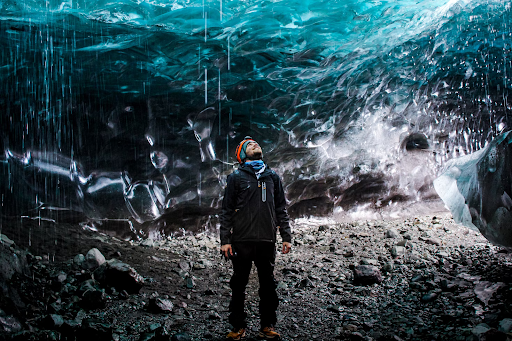
5. Ice Caves
The cracking and changing of glaciers can often create large cracks, gaps, and holes within the ice. These are mind-blowing naturally-occurring places to stand and climb in for avid explorers, making excellent photography opportunities. Ice caves are unique year on year as glaciers move and change in different ways, meaning the caves you explore could be changed entirely a year from now.
Different caves have seasons in which it’s best to visit and enter them, so you should do your research before visiting any ice caves in Iceland to ensure they’re safe. Normally, November through to April are the best times to explore ice caves as temperatures are low enough to keep glaciers firm and solid. We recommend the following ice caves in Iceland:
- Crystal Ice Cave in the Breiðamerkurjökull glacier
- Katla Ice Cave, accessible year-round and formed by Katla volcano
- Vatnajökull Ice Caves, great for avid hikers to trek to
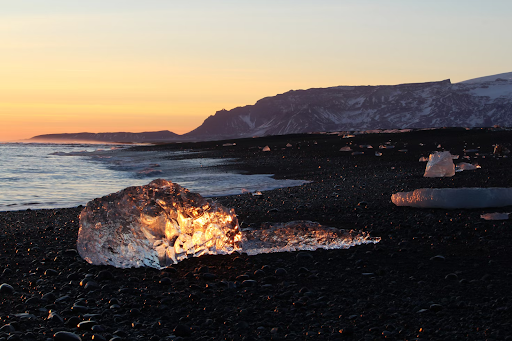
6. Black Sand Beaches
Iceland’s beaches are not your typical holiday destination beaches. The black sands create some stunning scenery which attracts tourists and locals alike all year round.
An ominous twist on a normally golden scene, black beaches are also caused by millions of years of volcanic activity. Volcanic materials, including basalt rock with iron content high enough to absorb light, have been eroded over time by strong seas. The black volcanic rock that has been pounded by waves has washed up on Iceland’s shores to create these striking beaches. You can see some of Iceland’s most popular black sand beaches below.
- Reynisfjara, featuring basalt rock formations on the shoreline and recognisable as a filming location for Game of Thrones
- Dyrholaey, home to a charming lighthouse and some stunning Icelandic wildlife
- Diamond Beach, featuring stunning floating glacial blocks and sometimes seals
- Solheimasandur, featuring an old plane wreck, ideal for a unique photoshoot
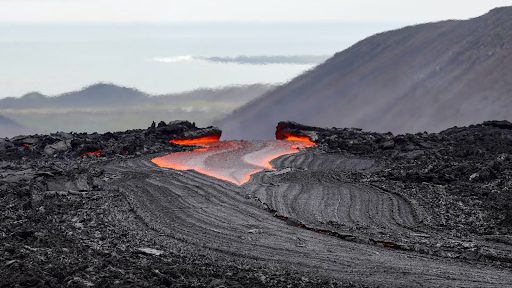
7. Volcanoes in Iceland
Located across a gap in tectonic plates, it’s no wonder that Iceland is home to so many volcanic mountains. Volcanic eruptions have devastated Icelandic settlements since the arrival of humans on the island. It’s estimated that around 130 volcanic mountains exist in Iceland, the vast majority of which have never erupted since humans have lived in Iceland.
There are active volcanoes in Iceland that could, theoretically, erupt at any time. Warning systems are in place to warn locals and tourists in the area in the case of an eruption, in which cases local evacuations are necessary.
Some of the most interesting volcanic experiences in Iceland are:
- Þríhnúkagígur, where you can take an elevator into a magma chamber
- Mount Hekla, the most active and infamous volcano in Iceland, having last erupted in 2000
- Mount Fagradalsfjall, which erupted for 6 months, making it the longest Icelandic eruption in 50 years
- Eldfell, located in the Westman Islands and having last erupted in 1973
- Askja, with stunning blue waters and history of some pretty deadly eruptions
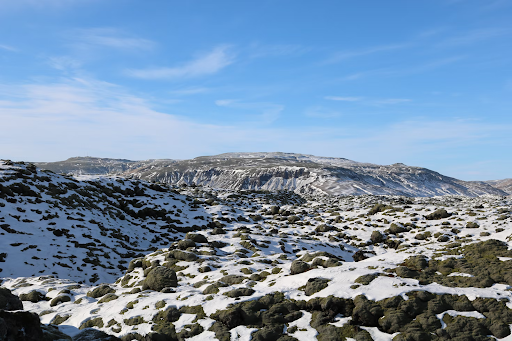
8. Iceland's Lava Fields
Lava fields are one natural wonder in Iceland that can be easily missed. When volcanoes have erupted throughout Iceland’s history, rivers of lava have flowed over the country’s surface, leaving destruction in their wake. Volcanoes and lava act unpredictably, creating unique and incredible landscapes called lava fields behind them. These are excellent places for hiking or simply enjoying the stunning views. Iceland’s array of lava fields includes:
- Eldhraun, the largest lava field covered in greenery on Iceland’s Road 1
- Dimmuborgir, a popular field with incredible rock formations near Lake Myvatn in the north
- Krafla, a newer lava field still bubbling and steaming
- Berserkjahraun, over 3,000-year-old spikey rocks covered with iconic soft moss
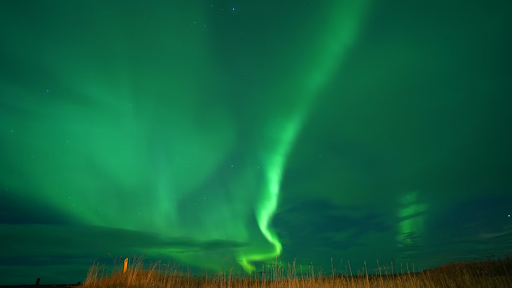
9. Northern Lights
Countless tourists scour Iceland’s night skies in search of this incredible natural wonder every year. Hunting the Northern Lights can be a challenge, but with our top tips and an expert guide with you, you can increase your chances of experiencing something really special. Observing these colourful rays dancing across a clear, dark sky truly is breathtaking.
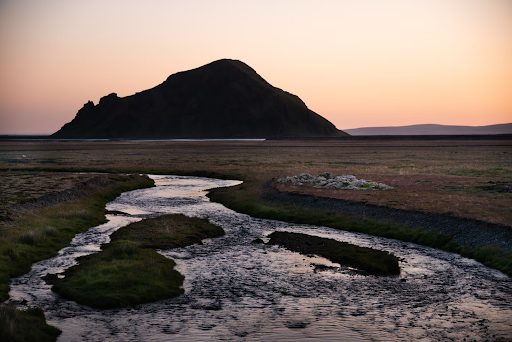
10. Midnight Sun
If visiting during the summer months, you will be witness to one of the most extraordinary natural wonders of Iceland, the midnight sun. Due to Iceland’s placement on the globe, the sun has a unique placement in the sky. Around the summer solstice in June, Iceland experiences a phenomenon called the Midnight Sun in which the sky is never dark. This results in 24 hours of sunlight. There are several celebrations on the summer solstice but the Midnight Sun can be enjoyed well into August when just a few hours of darkness set in at night.
11. Basalt Columns
The geology in Iceland plays a huge role in the natural wonders you can see there, particularly the distinct appearance of rock formations, or basalt columns. The cooling of basalt lava and the erosion that follows leads to the most jaw-dropping, natural geometric formations, which attract visitors in the thousands. Some of the most famous rock formations in Iceland include:
- The Hvítserkur Sea Stack, an offshore formation in North-West Iceland
- Svartifoss, the columns which were used as inspiration for the architecture of Hallgrímskirkja Church
- Dyrhólaey, a natural sea arch
- The Elephant Rock, a formation that can be found in the Westman Islands, approximately 165km from Reykjavik.
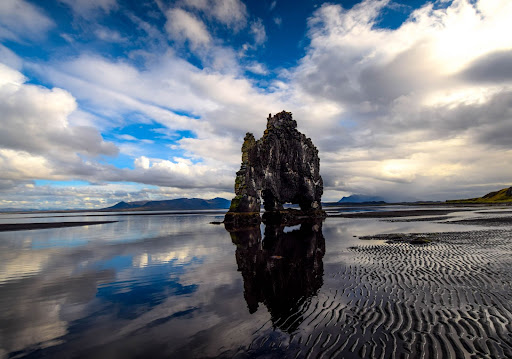
What are Iceland’s Natural Resources?
With a country so small in terms of population size, many people wonder what the main resources of the country are. The natural resources in Iceland are a huge part of the economy, both in attracting tourism and international exports. Fishing, water, and sustainable energy sources are the 3 major natural resources. Fisheries account for a large portion of the Icelandic economy, with around 40% of the export value in Iceland from fish exports.
Around 85% of Iceland’s main energy supply comes from renewable sources, this includes geothermal energy, hydropower and wind energy. Iceland produces approximately 55,000 kWh per capita. This is over 9 times the EU average.

Natural Disasters in Iceland
Located on the edge of two tectonic plates, Iceland is no stranger to volcanic activity. While some activity creates stunning landscapes and geographical features, deadly eruptions have taken place throughout the country’s history. Earthquakes, lava flow, and ash clouds are all symptoms of eruptions and are not to be underestimated. Clouds of ash and gas are notorious for killing people and animals in the past, so are not to be overlooked.
There are several active volcanoes around the island that could erupt at any time - in fact, a volcano in the Reykjanes peninsula near Keflavik airport has erupted twice in the past two years. Meteorologic authorities in the country can predict most eruptions and evacuate areas if need be, so there’s no reason for tourists to worry about natural disasters in Iceland.
Now you have an idea of the scale of Iceland’s nature, you can begin to plan your perfect trip. Why not browse our range of rental cars to find the perfect one for your journey? Book with SAD Cars today for the most affordable hire car in Iceland.
